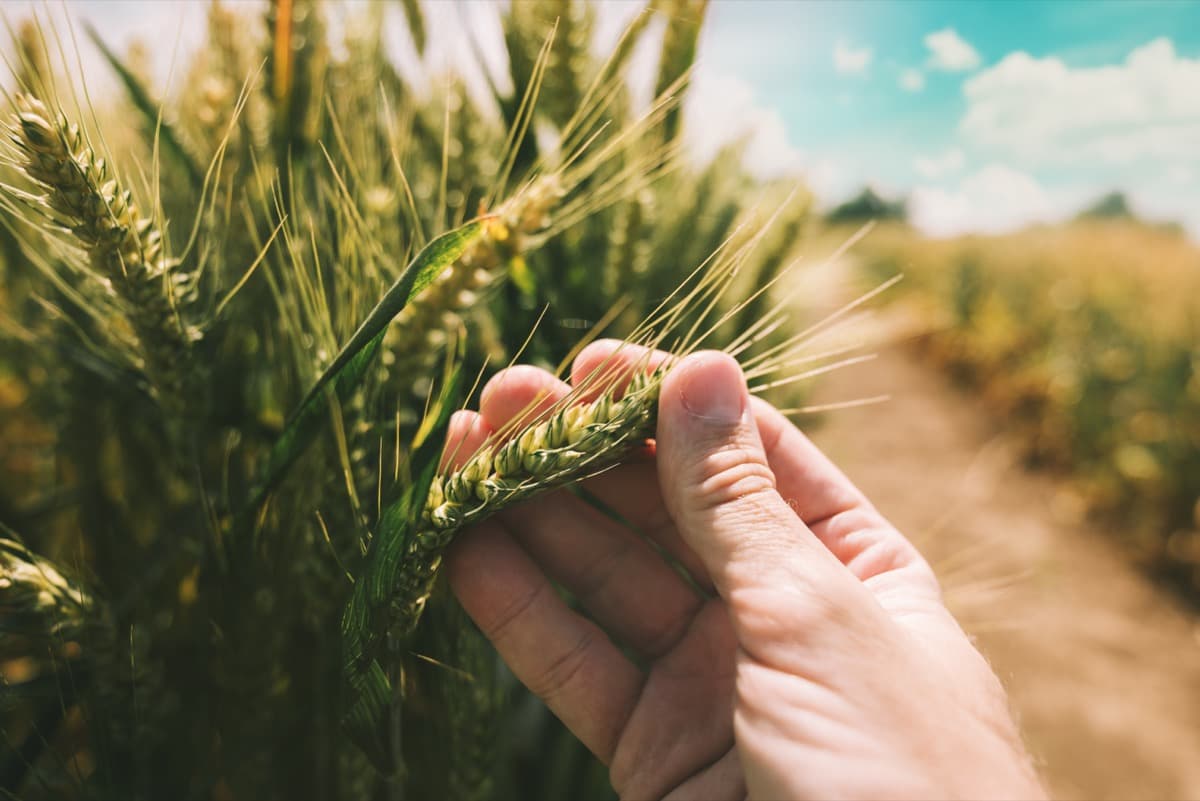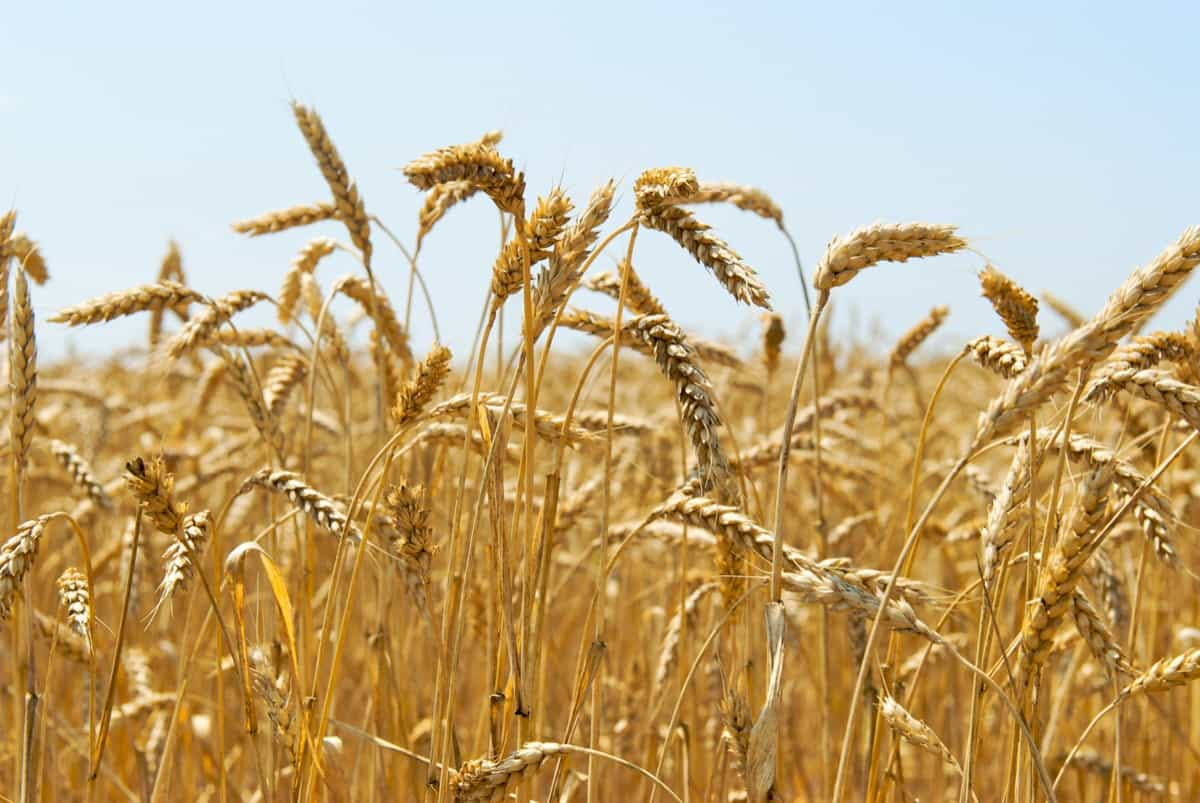Welcome to our comprehensive guide on managing common diseases in wheat. As a staple crop worldwide, wheat is vital in our food production. However, various diseases can threaten its yield and quality. In this blog, we will delve into identifying these diseases, explore the damage symptoms they cause, discuss their spread mechanisms, and, most importantly, provide valuable insights into effective prevention strategies.

Major and Common Wheat Diseases and Their Control
- Powdery mildew: Powdery mildew is a common wheat disease characterized by a white, powdery growth on leaves, stems, and spikes. It weakens the plant, reduces photosynthesis, and lowers grain quality. Control measures include planting resistant varieties, practicing crop rotation, and applying fungicides when necessary.
- Loose smut: Loose smut infects wheat flowers and replaces the grains with dark, powdery spores. It can lead to significant yield losses if not managed. Seed treatment with fungicides is an effective control method to prevent smut infection in wheat.
- Brown rust: Brown rust appears with reddish-brown pustules on leaves, stems, and spikes. It affects the plant’s nutrient absorption and reduces yield. Cultivating resistant wheat varieties and timely application of fungicides help control the disease.
- Stripe rust/Yellow rust: Stripe rust causes yellowish-orange stripes on leaves. It can severely reduce grain yield if left unchecked. Using resistant cultivars, applying fungicides, and practicing proper crop rotation are important management strategies.
- Black rust: Black rust produces black pustules on leaves, stems, and spikes, leading to yield loss. Controlling black rust involves using resistant wheat varieties and timely fungicide applications.
- Flag smut: Flag smut affects wheat heads, resulting in smutty kernels. To manage this disease, it is essential to use certified disease-free seeds and practice crop rotation.
- Hill bunt or Stinking smut: Hill bunt causes distorted spikes with masses of dark spores. Crop rotation and treating seeds with fungicides are effective control methods.
- Karnal bunt: Karnal bunt affects wheat grains and produces a foul smell. Crop rotation, using disease-free seeds, and treating seeds with fungicides help manage this disease.
- Leaf blight: Leaf blight causes brown lesions on wheat leaves, reducing photosynthesis and yield. Fungicide applications and crop rotation are important management practices.
- Footrot: It affects the base of wheat stems, leading to lodging and yield loss. Crop rotation, good soil drainage, and resistant varieties are crucial for managing this disease.
- Head scab/Fusarium leaf blotch (Snow Mold): Head scab appears white mold on wheat spikes and can reduce grain quality. Crop rotation, using resistant varieties, and applying fungicides at flowering can help control this disease.
- Leaf blotch: Leaf blotch causes irregular brown spots on wheat leaves, reducing yield. Fungicide applications and crop rotation are effective management strategies.
- Helminthosporium leaf blotch (Spot Blotch): Helminthosporium leaf blotch results in small, brown spots with yellow margins on wheat leaves. Crop rotation and using resistant varieties are important for managing this disease.
- Seedling blight: Seedling blight affects germinating wheat seeds, causing damping-off and poor emergence. Treating seeds with fungicides and ensuring proper seedbed preparation aid in controlling this disease.
How to Manage Common Diseases in Wheat
Powdery Mildew of Wheat: Identification and Management
- White, powdery appearance on the upper surface of leaves and stems are disease symptoms for powdery mildew. These patches later turn black and cause the drying of leaves and other plant parts.
- Survival and spread: The fungus survives as dormant mycelium and asci in infected plant debris during summers. Primary spread occurs through ascospores, while secondary spread happens through airborne conidia.
- Favorable conditions: Powdery mildew thrives in periods of high humidity (not necessarily rain) and cool to moderate temperatures (around 20-21°C).
Loose Smut of Wheat: Identification and Management
- Disease symptoms: Loose smut is a seed-borne disease, with infection occurring during flowering. Infected heads emerge earlier than normal heads, appearing as olive-black masses of spores covered by a gray membrane.
- Survival and spread: The disease is internally seed-borne, infecting the embryo. Primary infection happens through sowing infected seeds.
- Favorable conditions: Cool and humid conditions during the flowering period favor loose smut infection in wheat.
Brown Rust of Wheat: Identification and Management
- Disease symptoms: Brown rust primarily affects upper leaf blades but can infect sheaths, glumes, and awns. It forms circular or slightly elliptical pustules containing orange to orange-brown urediospores.
- Survival and spread: The pathogen over-summers in low and mid-altitudes of the Himalayas and Nilgiris. Primary infections develop from wind-deposited urediospores in the eastern Indo-Gangetic plains.
- Favorable conditions: Brown rust epidemics occur when temperatures range from 20-25°C and free moisture, such as rain or dew, is present.
In case you missed it: Wheat Root-knot Nematode Pest Management in Wheat: Symptoms, Treatment, Chemical, Biological, Natural, and Organic Control

Stripe Rust /Yellow Rust of Wheat: Identification and Management
- Disease symptoms: Stripe rust mainly affects leaves, appearing as bright yellow pustules arranged in linear rows or stripes. Teliospores, arranged in long stripes, are dull black.
- Survival and spread: Inoculum survives as uredospores/teliospores in the northern hills during the off-season. Primary spread occurs through uredospores from hills.
- Favorable conditions: Stripe rust thrives when the temperature is between 10-20°C and humidity is high.
Black Rust of Wheat: Identification and Management
- Disease symptoms: Black rust affects almost all aerial parts of the wheat plant, particularly stems, leaf sheaths, and surfaces. Pustules are dark reddish-brown and may coalesce, giving the infected areas a ragged appearance.
- Survival and spread: The pathogen survives on stubbles and volunteer crops. The alternate host is Berberis spp. Primary spread occurs through uredospores from southern hills.
- Favorable conditions: Moisture and temperatures above 20°C favor the development of black rust.
Flag Smut of Wheat: Identification and Management
- Disease symptoms: Flag smut symptoms are visible on stems, culms, and leaves from the late seedling stage to maturity. Twisting and drooping of leaves, with gray to grayish-black sori on leaf blades and sheaths, are common signs.
- Survival and spread: The disease is seed and soil-borne, with smut spores remaining viable for over ten years. Primary infection occurs through sowing infected seeds or resting spores in the soil.
- Favorable conditions: Flag smut thrives at 18-24°C and relative humidity above 65%.
Hill Bunt or Stinking Smut of Wheat: Identification and Management
- Disease symptoms: Hill bunt attacks seedlings, resulting in systemic growth along the shoot tip. Inflorescences and spikelets become smut sorus of dark green color with chlamydospores.
- Survival and spread: The pathogen survives in seeds, and sowing infected seeds is the primary source of infection.
- Favorable conditions: Hill bunt develops in temperatures around 18-20°C and high soil moisture.
Karnal Bunt of Wheat: Identification and Management
- Disease symptoms: Symptoms of Karnal bunt are difficult to distinguish in the field, but infected kernels on a head may spread the glumes. Detection is easier on harvested seeds.
- Survival and spread: The disease is seed-borne, and sowing infected seeds is the primary source of infection.
- Favorable conditions: Karnal bunt develops in temperatures around 18-20°C and high soil moisture.
Leaf Blight of Wheat: Identification and Management
- Disease symptoms: Leaf blight manifests as reddish-brown oval spots on young seedlings, which can coalesce and cause drying of leaves in severe cases. It is a complex disease involving multiple pathogens.
- Survival and spread: Primary spread occurs through externally seed-borne and soil-borne conidia, with secondary spread by airborne conidia.
- Favorable conditions: Leaf blight is prevalent in temperatures of 25°C and high relative humidity.
Integrated Disease Management Practices to Control Disease in Wheat
- Deep plowing during summer to control nematodes and expose soil-borne pathogens.
- Soil solarization uses solar heat to control soil-borne diseases.
- Timely sowing to reduce disease incidence.
- Field sanitation and roguing to remove infected plant debris.
- Eliminating alternate host plants to reduce disease pressure.
- Growing trap crops like peas or marigolds to manage pests.
- Planting tall border crops like mustard to manage aphids.
- Crop rotation with non-cereals to disrupt disease cycles.
- Ecological engineering by planting attractant, repellent, and trap crops.
- Leaf rust, Stem rust, and Yellow rust: Cultural measures are Mixed cropping and crop rotation. Avoiding excess nitrogen (N) application.
- Chemical control: Propiconazole 25% EC, Tebuconazole 25% EC, Thiophanate Methyl 70% WP, Zineb 75% WP, or Mancozeb 75% WP.
- Powdery mildew: Cultural control is a Limited option due to inadequate resistance.
- Chemical control is Triadimefon 25% WP.
Foliar blight, Seedling blight, Leaf spot, Leaf blight: Cultural control is using certified seeds, practicing timely sowing, and implementing crop rotation. Plant tall crops as barriers. Chemical control by Zineb 75% WP, Thiophanate Methyl 70% WP, or Mancozeb 75% WP.
Kernel bunt: Cultural control by Effective land leveling and drainage, decreased seed rate, increased row spacing, delayed sowing, and proper irrigation management. Plastic mulching, stubble burning, and crop rotation. Chemical control by Propiconazole 25% EC, Bitertanol 25% WP, or Thiram 75% WS.
In case you missed it: Wheat-gall Nematode Pest Management in Wheat: Symptoms, Treatment, Chemical, Biological, Natural, and Organic Control

Loose smut, Hill bunt, Head scab, Flag smut: Cultural control by Uprooting affected plants, using disease-free seeds, crop rotation, and disease-free field selection. Chemical control by Carboxin 75% WP, Tebuconazole 2% DS, or Thiram 75% WS for flag smut. Carboxin 75% WP or Triadimefon 25% WP for bunt control.
Conclusion
To effectively manage common diseases in wheat, it is crucial to identify damage symptoms, understand their spread mechanisms, and implement preventive measures. Timely diagnosis, cultural practices like crop rotation and sanitation, and targeted chemical control are vital in disease prevention.
- Beneficial Insects in Pest Management
- Natural Solutions for Pest Control in Flower Gardens
- Types of Fungicides Used in Agriculture
- Common Issues in the Fruit Development Stage of Pomegranate Farming
- Fruit Development Issues in Papaya: Easy Solutions and Treatment
- Soil-Borne Diseases and How to Protect Your Plants
- Practices to Prevent Disease Spread in the Garden
- From Wilted to Thriving: How to Treat Root Rot Naturally in Houseplants
- Natural Remedies to Cure Brown Spots on Fig Tree Leaves